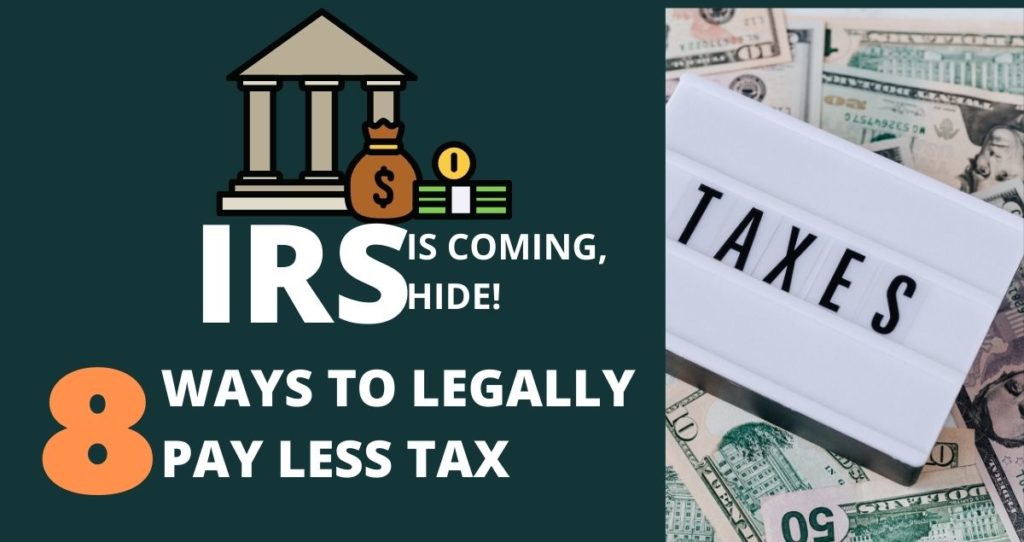Saving money for your kids is one of the greatest gifts you can give them. Not only you will give them a headstart in life, but also you can use their savings accounts as an opportunity to teach them about money at an early age. The money you save for your kids will also keep them out of financial shackles such as taking out expensive loans for everything they buy. In addition, contributions to some of your kids’ savings accounts can grow tax-free which is a major step in building wealth for your children. This article will walk you through possible ways to save money for your kids and savings accounts you can open for them.
The type of savings accounts you pick for your kids will depend on what you want your kids to use the money for after growing up. Tax benefits can also impact the way you save money for your kids. For example, you can open a 529 college savings account to help your kids pay for college when they become adults. You can also open a Roth IRA for yourself and designate your kids as beneficiaries. This will allow your kids to inherit the entire account tax-free.
If you are interested in learning how to start saving money for your children, keep reading. Without further ado, let’s get started.
1. Establish a 529 college savings account
A commonly used method to save money for your child is to open a 529 college savings plan. This plan is designed to hold funds that will cover your children’s college-related expenses. What makes 529 plans attractive is that you can invest and grow the money inside the account. With a little bit of homework, you can secure an account with low management fees and charges. These benefits help you save money for your kids much faster at a steady rate.
According to BlackRock, there are no income limits to making contributions to the 529 college savings accounts. This is beneficial to parents with higher incomes to save money for their children’s education. You can also get away with taxes on your kids’ gifts through an accelerated gifting strategy by combining up to 5 years of contribution in one year.
Any withdrawal on the account will be tax-free as long as they are used to cover eligible educational expenses. In addition, you get tax savings at both state and federal levels when the money is used to cover college expenses. The 529 college saving plan also comes with low minimum contributions. So, no matter how small your income is, you can still open a 529 college savings plan for your children.
Keep in mind that the funds inside the 529 college savings plan must be used for eligible expenses. Otherwise, you might have to pay a penalty and applicable tax on non-qualified withdrawals.
2. Open a custodial retirement savings account
Custodial IRAs (Roth IRA or Traditional IRA) are great ways to save money for your kids. In order to qualify for the account, your child must earn an income. For example, if your children earn an income from selling lemonade or babysitting, you can open a custodial IRA on their behalf and save money for their retirement.
As a custodian, you will manage the account and make investment decisions until your child turns the proper age. Some states require that your child turns 18 to take control of the account. Others might require the age of 21.
Read more: Can a minor open a Roth IRA: A guide to Custodial Roth IRA
3. Put the money in a trust fund
A trust fund is an account that allows you to save money and other assets for your kids. Just like a custodial IRA, you will still be responsible for the account until your kids become adults. Some states require the age of 18. Others, however, require the age of 21 before your children can take responsibility for their trust funds. What makes trust funds great is that they give you the flexibility to decide how the funds are to be used once your children come of proper age. For example, you can decide whether your kids use their funds for college-related expenses or simply let them take the money in installments.
4. Start a Roth IRA
An unusual way to save money for kids is to channel your money into a Roth IRA. How can you use a Roth IRA to benefit your kids? Your own contributions to the account can be taken out tax-free and penalty-free at any time. Another good benefit of the account is that you can grow it tax-free and pay no tax on qualified distributions.
In order to use your Roth IRA as a savings account for your children, you must have other retirement savings accounts of your own. If you have an employer-sponsored plan such as a 401(k) plan, consider contributing as much as possible to the plan. In 2022, the IRS allows you to contribute up to $20,500 to your 401(k) plan if you are under 50. Those who are 50 or older can contribute an extra catch-up contribution of $6,500.
The money you put into your 401(k) plan can support you while you use savings in your Roth IRA to support your children’s education or other financial needs. You might also get away with an early withdrawal penalty on your Roth IRA when your distributions fall into IRS exceptions. For example, the IRS waives the early withdrawal penalty on your Roth IRA when your distributions are due to college expenses, first home buyers, or adoption-related expenses.
Another great way to use your Roth IRA to save money for your kids is to make your kids beneficiaries of the account. Your kids will inherit your Roth IRA tax-free and use the money for their own purposes. Keep in mind that your kids must distribute the account within 10 years.
5. Open a child savings account
Many adults suffer from excessive spending due to the lack of financial education when they are younger. Unless you take a stand and change history, your own children might grow up without knowing how to properly use and manage their money. One way to save money for your kids and give them the financial education they need is to open a kid’s savings account.
Instead of handing them their allowances as cash, you can put the money into their savings account. This will allow them to watch their savings grow over time due to interest earned and monthly contributions. For example, you can give your kids a $20 monthly allowance for cleaning their rooms. This amount can easily be deposited into their savings accounts.
Your kid’s savings account will teach them how to save money, the benefits of interest rates on their savings, and more importantly, how to build their nest eggs. Most banks and credit unions have options for kids’ savings accounts.
Related: 9 tips on how to talk to your kids about money
7. Start an investment account: Open a custodial account on behalf of your kids under the Uniform Gifts for Minors Act (UGMA) or Unifrom Transfer for Minors Act(UTMA)
In case you want to save money for your kids, but also want to be in control of their accounts, open custodial investment accounts. There are two different custodial savings accounts you can start. The first account is the Uniform Gifts for Minors Act(UGMA). This account allows financial products such as insurance policies, cash, stocks, bonds, etc., to be transferred to your kids without establishing a formal trust. As a custodian, you will manage the account until your child comes to a legal age to manage the account by himself/herself.
The second account is the Uniform Transfer for Minor Act(UTMA). This custodial account allows your minor to receive gifts such as real estate and other physical assets without the help of a formal trustee. In addition, they can avoid tax on their gifts until they reach the proper age.
Even if you have saved money for your child in a UTMA/UGMA, you are still the one responsible for the funds in the account. But, you cannot use the money for your own needs. Any withdrawals you make to the account must be done on their behalf and used to benefit them. Once your kids reach the proper age of 18 or 21 in some states, they will assume responsibility for their accounts.
8. Open a health savings account(HSA)
A Health Savings Account(HSA) is an account that holds money designed specifically for qualified health-related expenses. That is you must use the money to cover qualified health-related costs to avoid a penalty. The money you contribute to your HSA comes from your before-tax paycheck and your employer might contribute to the account. This helps you grow the account faster. Unlike the Flexible Spending Account(FSA) where the money does not roll over to the following year; the money in your HSA account rolls over year after year. To qualify for an HSA, you must be enrolled in a High Deductible Health Plan(HDHP).
So, how can an HSA help you save money for your kids?
When you turn 65, the money in your HSA can be used for any purpose without a penalty. You can also invest the money in your HSA and grow it just like any other retirement plan. After you turn 65, you can do whatever you want with the money without paying a penalty. In this case, your HSA can be used like another retirement account such as a 401(k) plan. Why does this matter? Because the money in the account can help you support your children’s higher education, pay for their weddings, or give to them money for other purposes.






